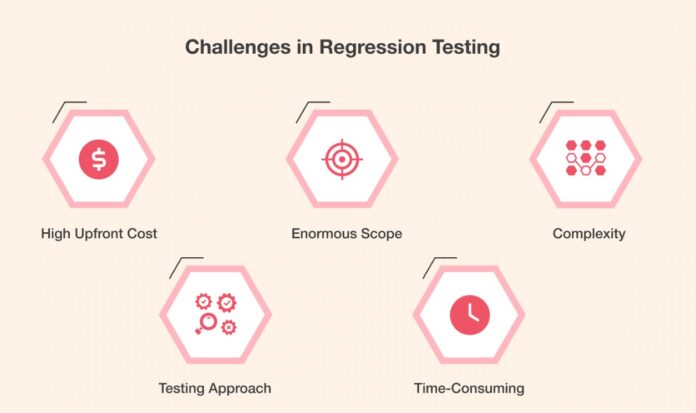
Software launches and functioning are incomplete without software testing. The process involves finding any bugs that have occurred or can occur. Also, you can use the testing process to run checks on various kinds of applications yet to enter the market.
The testing is incomplete if the software makes it to the market without testing. Also, it is important to ensure that the software has the least errors.
As a software tester, many functions are expected of the professionals:
- Catch the errors if the developers do not address them.
- The aim is to make the software immune from potential mistakes.
So, if you are one of the testers, you should know that mistakes can happen anytime and anywhere. But what kind of errors?
They can be of different kinds, and if you want to do testing in the right way, here are some common mistakes and the tricks to avoid them.
1. Beginning Without Any Scope

The mistake of beginning without any scope for testing is the first common mistake that testers make. It is more prominent within the testers who are less experienced or still in their beginning stage. Testing can be considered an activity with multiple dimensions. These differ from functional to performance, followed by testing for load and security issues. There are many others.
Hence, you should know the testing scope before beginning the process. First, however, you need to be well-versed with the requirements. Also, you should be ready with the test strategy to try reliable steps when you are stuck. Also, it will help you keep your timelines defined during the process.
2. Using Similar Data For The Overall Process
If you are trying to test the suitability of the same data, you might be committing a big mistake. It would be best if you did it when you know that testing will be beneficial when it is done with data belonging to different types and categories. You get a better edge when you try to keep a certain variety of attributes while testing.
Also, you have the opportunity to diagnose the problems that can arise with products that are new to the market. If you repeat the tests or use the same data for testing, there shall be no value addition. Also, the inputs won’t make any difference.
Hence, it would be best if you understood that you need to add value with testing. So, please don’t forget to consider various input possibilities related to real-world scenarios while testing.
3. Making A Test Plan To Conduct Regression Testing

Suppose that you have a test case. Now, what do you think about its regression testing step?
Is it always needed, or whether you have the option of skipping its execution?
There is no need to execute all test plans.
What you should do is finalize a plan for regression testing. The idea behind it should be to provide the maximum coverage for the code. Also, there should be a minimum number of test cases.
If you are looking for a good fit in regression testing, you can go for an end-to-end process of workflow tests. It helps with a maximum number of interactions.
4. Forgetting About The Product Evolvement Assumption
Testing automation processes should belong to the possibility of the evolution of various products. As a tester, when creating the automation, you should not think about the product’s condition and working in the current scenario. The features like UI, design, and interfaces should evolve based on tomorrow’s possibilities. It would help if you created a road map for the potential releases and cater to the products and their elements that can change.
It is an imperative step. Hence, you should not forget it when you plan to move forward with the automation process. It will ensure that the actions and hardware of the present do not become obsolete in the future.
5. Ignoring The Idea Of Reusing The Code

While conducting the testing automation process, resuing the old codes and penning the new ones for reusability is an appreciated option. It is important as there can be more than a single test case that runs with the help of the same codes.
Hence, it is better to move the lines to a file or a function and use them for various test cases. Hence, it is important both as a service provider and a service giver. If you are seeking OTT testing services, you can visit this website.
6. Choosing An Unsuited Tool For The Automation Process
When you take your initial steps in this process, you will explore that there are various kinds of automation tools available. However, it would help if you were on the quest to find the one that fits your need the most. If you belong to the beginner category of testers, you should prefer using open-source tools. This is because these tools do not have any upfront cost.
However, you need to check whether the tool fits the need and also is fit for the costing purpose or not. You need this surety because if you move forward with it and plan to change the tool in the middle of the process, the production cost can go up. Hence, you should not see if the device works as an open source or charges you for using it. But, you should know the level at which it helps solve the issues.
7. Continuous Testing – Requirement Or Ignoring

It would help if you never overlooked this need. The integrations with the product build system are not considered necessary, but if you do it, you are on the beneficial side. The developers can see instant validation when they have the design for test automation in the right place. Also, opting for continuous testing will help to catch hold of the breaks, if any. It helps in finding potential injection changes, which can introduce the product break.
Conclusion
So, if you have done any of these errors or others, remember that you are not the only one who has done it. Many others have crossed this stage and become testing experts. So, please don’t ignore the pointers. Instead, pay attention and take steps so that none of these mistakes cross your way again!











